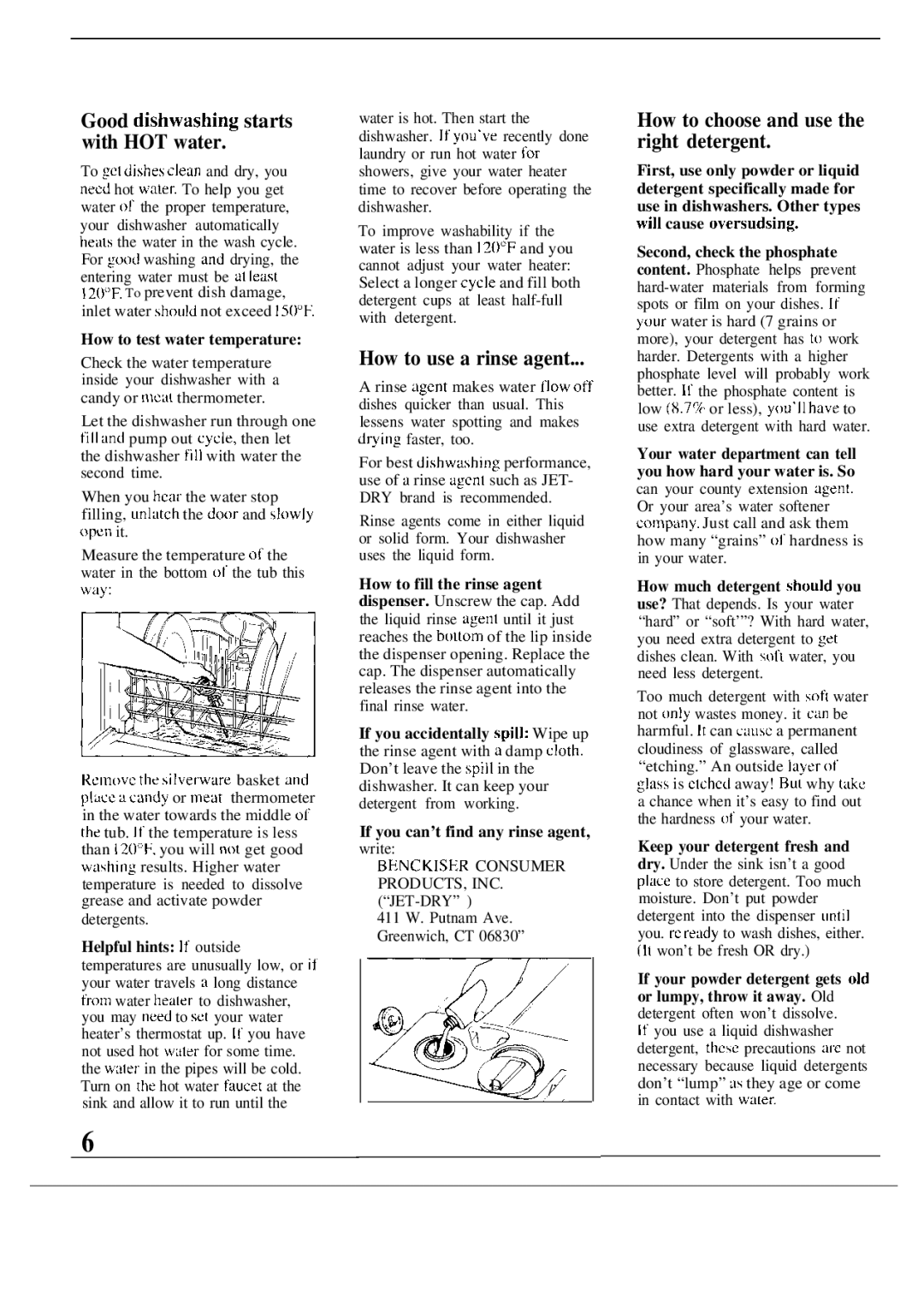HDA829 specifications
The Hotpoint HDA829 is a premium dishwasher that combines efficiency, versatility, and advanced technology for a superior cleaning experience. This model is designed to meet the demands of busy households while offering user-friendly features that simplify dishwashing tasks.One of the standout features of the Hotpoint HDA829 is its multiple wash cycles, which provide tailored cleaning options for various types of loads. Whether you have heavily soiled pots and pans or delicate glassware, the dishwasher offers specific settings to ensure optimal results. The high-temperature wash cycle is particularly effective for sanitizing dishes, making it an excellent choice for homes with children or those concerned about food safety.
The HDA829 is also equipped with innovative technologies such as the Smart Sensor, which automatically detects the level of soiling on dishes and adjusts the wash intensity accordingly. This not only ensures thorough cleaning but also conserves water and energy by preventing unnecessary use of resources.
Energy efficiency is another hallmark of the Hotpoint HDA829. With its Energy Star certification, it operates with reduced water and energy consumption, making it an environmentally friendly choice. Users can save on utility bills while still enjoying impeccable cleaning performance.
In addition to performance, the HDA829 boasts a sleek and modern design. Its stainless steel finish adds a touch of elegance to any kitchen, while the ergonomic controls make it easy to operate. The interior features adjustable racks and a variety of loading options, allowing for maximum flexibility when arranging dishes and utensils.
Quiet operation is another key characteristic, with the dishwasher designed to minimize noise during its wash cycles. This makes it suitable for open-concept living spaces or late-night use without disrupting household activities.
Overall, the Hotpoint HDA829 stands out for its impressive features, including its diverse wash cycles, smart sensor technology, energy efficiency, and sleek design. It is an ideal choice for those looking for a reliable dishwasher that efficiently handles everyday dishwashing needs while contributing to a sustainable household. With the Hotpoint HDA829, you can enjoy sparkling clean dishes with minimal effort.

